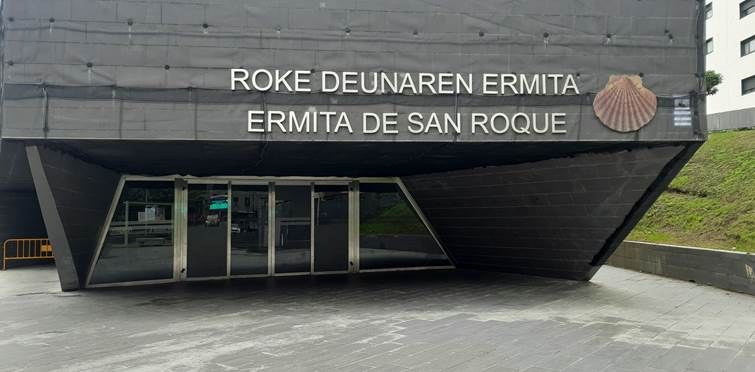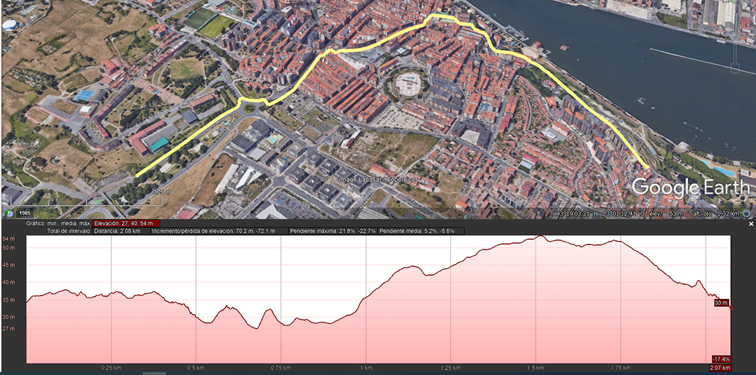

Portugalete is part of the Camino de Santiago, along its Northern Route, declared a World Heritage Site by UNESCO on July 5, 2015.
The Camino follows the upper entrance to Portugalete, offering excellent views of the historic center and the main artery of modern Portugalete. The Noble Villa has a municipal hostel for pilgrims.
The presence of the town of Portugalete on the Coastal Way pilgrimage to Santiago is confirmed by a direct Jacobean source, that of the Armenian Bishop Mártir de Arzendjan, who in 1494 made the round trip along this coastal route and on his return settled in “the large city of Portugalete”.
The Northern Way of St. James runs along the Cantabrian coast from Irún to Santiago. In Asturias, it divides into two branches: the Coastal Way and the Primitive Way. It was one of the most active routes in the early years of pilgrimage. Pilgrim hospitals and monasteries remain as traces, as well as documentation attesting to the passage of pilgrims in the 10th century.
The reasons for making the pilgrimage varied. The most common were devotion, seeking forgiveness for sins, fulfilling a vow, or seeking relief from illness. The overcrowding and increased safety along the route led to thousands of merchants and knights joining the Camino, who used the pilgrimage to satisfy their curiosity about foreign peoples and lands.
Click to watch or listen to a video about the Camino in Portugalete (7:12, by Oscar Terol)
Click to watch or listen to a micro-video about the Northern Way (0:55')
Click for more general information
Click to learn about the hostels
DESCRIPTION AND ACCESSIBILITY:
The Camino de Santiago enters Portugalete through the municipality of Sestao, at the southeastern end near the estuary. It runs parallel to the estuary for 750 meters, entering the historic center exclusively to pass by the Basilica and exit 200 meters later.
For 550 meters, it heads straight inland, leaving the estuary behind us. This brings us to the cemetery and the outskirts of the town. We cross to the other side of the road to avoid a roundabout, continue in the same direction, and after 500 meters, we reach the end. The Camino passes through the municipality of Ortuella.
For most of the route, the ground is smooth, with dips and occasional podotactile marks. The historic center section presents more difficulties, as described in the route.
Below is the PROFILE of the route according to Google Earth

It shows 2 kilometers, with a difference in altitude of about 25 meters, average gradients of 5.2% uphill and 5.6% downhill, and maximum gradients of 21.8% and -22.7%.
The downhill slopes around the Basilica are notable, with 40 meters of gradients ranging from 19% to 24% on the low-traffic roadway and wide steps on the sidewalks. In the historic center, the Camino passes through a 10% to 15% gradient. Later, the Camino passes through Gregorio Uzquiano Street at 8% to 10% for 300 meters, reaching a gradient of 14% if you wish to access the new chapel. At the entrance to the cemetery, there is a 16% ramp to avoid stairs, and at the end of the route, a downward slope of no more than 8% but approximately 300 meters long.
There are BENCHES or adjacent parks along much of the route.








